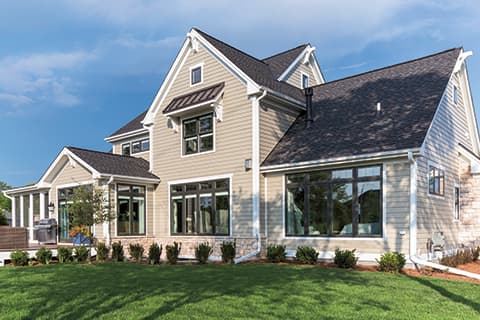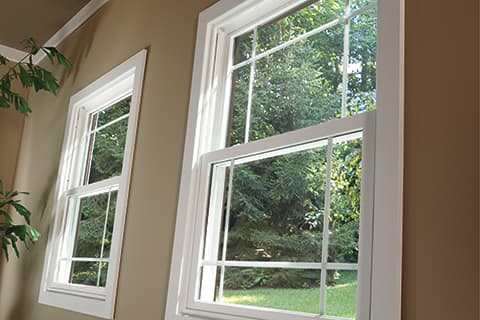Window Replacement 101: Decision Time
Posted
on May 15, 2018

Decisions, decisions. You’ve gotten a good start on the window replacement process, and now it’s time to make some hard choices. You should have plenty of knowledge at this point, but right now you probably have more questions than answers.
Which window style matches my home? Which ones do I actually like? What options are best for energy efficiency?
Whatever you decide can affect the price of your project. This guide can’t make those decisions for you. But it will help you make informed choices in your search for the right windows for your home.
If you need help figuring out which window style, material, glass or features are right for your home, talk it over with your local window expert. They can give you insights into the advantages and disadvantages of the options based on your preferences, budget, neighborhood and climate.

Finding the right window style for your home
Just because your current windows are one style doesn’t mean you have to stick with it. Those window styles could’ve been chosen by a previous owner or a contractor. They may have been picked because they were convenient or popular at the time — or just fit the personal preference of the homeowner.
Now it’s your turn. You have the option to choose a window style fits your needs and tastes. Or you can look to these cues to find a style that fits your home.
Your neighborhood is your guide.
Most homeowners don’t want a cookie-cutter home that looks like everything else on your block. But you don’t want your house to look out of place either. The mix of styles used in your neighbor’s homes are a good guide. They are typically from a similar era and architectural style, so you have a template for the types of windows that fit your home’s personality.
Look to your lifestyle.
Windows shouldn’t only fit your home; they should fit your life. Outdoorsy? You may want to preserve a view or open up your home to the outside. Kids and pets running around? You might prefer to keep blinds, shades and hardware out of reach. Can’t stand upkeep? You should stick to windows that are low maintenance and easier to clean.
Identify your pressing needs.
Every window style has its benefits and its drawbacks. They all fall on a spectrum in regards to natural light, ventilation, energy efficiency, ease of use, and protection from the elements. Ranking these factors by what’s most important to you. Then choose the window style that best fits your needs.
- Awning windows swing outward from a top hinge to provide ventilation and light. They're often placed above or below other windows or over doors. Paired with other openings, awning windows provide great air circulation.
- Bay and bow windows are combinations of windows that extend outside your home. They can bring in more natural light in limited wall space. Bow windows are typically fixed, but bay windows can open up to provide fresh air from multiple directions.
- Casement windows swing open from the side to provide controlled air flow. There is no sash to cover the window opening, so they bring in the natural light. Casement windows typically open with a small crank, making for ease of operation.
- Double-hung windows have two sliding sashes to provide efficient ventilation. You can let in a cool breeze from the bottom sash and draw hot air from the ceiling outside through the top sash. They’re also an easy window style to clean.
- Single-hung windows have the classic look often preferred by owners of historic homes. They open up from the bottom for ventilation.
- Sliding windows have a single panel that glides open — great for hard-to-reach areas. They’re preferred for their ease of use, ventilation and wide views.
- Special shape windows add unique designs — rectangles, arches, curves and angles — to your window openings and can create interesting light patterns indoors. You can use them alone or as an accent to other window openings.
Picking the frame materials
The three of the most popular frame materials are wood, fiberglass and vinyl. You may find steel or aluminum with some manufacturers, but those materials are primarily used in commercial settings. All materials come in a variety of styles, with options at multiple price points.
- Wood is a traditional choice. It’s the original window material. Homeowners prefer wood for its natural beauty, warmth and versatility. You can stain it to match other woodwork in your home, paint it any color. Wood also naturally insulates your home, making it an energy efficient choice.
- Fiberglass is a composite material that is both strong and durable. It protects your home against extreme heat and cold, and has the insulating qualities of wood. With fiberglass windows, you get a natural look, that can last for years without having to pick up a paintbrush.
- Vinyl is popular for its affordability and energy efficiency. It’s made of plastics that provide natural insulation and withstand the elements for years. Scratch-resistant vinyl window frames are low maintenance. They are easy to clean and dont typically have to be painted, stained or refinished.
Before you make a final decision, see the different materials in person. There may be details in the appearance or construction that you didn’t notice online or in a brochure. Your manufacturer may even provide window samples or color stain samples so you can get a better idea of what the windows look like in your home.

Personalizing your window with features
There are a variety of ways to personalize your windows to better fit your needs for style and performance. Even with a relatively standard window style, you can create a custom look that adds beauty and character to your home. Common customization options include:
- Finishes and colors – Most styles and materials offer a wide range of finishes and colors to complement your home’s color palette. With wood windows, you can choose a stain or paint color offered by the manufacturer.
- Between-the-glass blinds and shades – Most homeowners have treatments over the windows. You can also put them inside your windows. Blinds and shades placed between the panes provide shade and privacy without the need for additional treatments. Some options can even come with technology to let you operate shades and blinds by remote control.
- Grilles – Get the appearance of smaller, individual window panes by sectioning off your windows with grilles. There are many options, so you can find the grille type that fits your home’s architectural style. Like blinds and shades, there are also between-the-glass grilles to make cleaning the window easier.
- Hardware – It isn’t just for operation of the window; hardware can enhance the design and aesthetic appeal, too. You can find window hardware that fits the other decorative finishes in your home — such as light fixtures and cabinet hardware — to create a consistent look.
- Trim – For wood windows, interior trim can add a classic look to match your home’s specific architectural style — or create a modern twist on an old design. There are also exterior trim options for wood windows that have low-maintenance exterior aluminum cladding to add style on the outside.
- Screens – Window screens are important for ventilation, but you don’t want them to affect the natural light or the view. The dark mesh of older screens created a tint over your window opening. Modern screens have more transparency — some are almost invisible. Retractable screens roll up and down like a shade, so you can keep the screen hidden until you open your window.
Selecting an installer
Improperly installed windows can be less energy efficient than the ones you’re replacing and may not function properly. After you’ve narrowed down your options — or made your final choice — follow up with the installers you talked to previously. Discuss your ideas and get a more accurate bid that reflects your decisions.
Quality installation is as important as the quality of the window itself. Check the references of the installers you’re considering before you make the call. Once you’ve made this last, critical decision, you’re on your way to installation day!
Schedule a free consultation to find windows and doors for your home.
